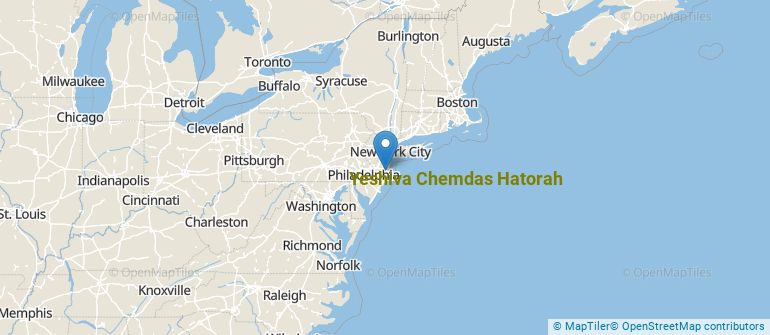 by our College Data Analytics Team
by our College Data Analytics TeamExplore the best ranked schools for the programs you are most interested in.
Yeshiva Chemdas Hatorah was not ranked in College Factual's 2025 Best Overall Colleges report. This could be for a number of reasons, including lack of data.
Yeshiva Chemdas Hatorah has an acceptance rate of 56%, which means the school is serious about who it admits. Take your time in putting together a strong application that highlights why you are a good fit for Yeshiva Chemdas Hatorah.
The student to faculty ratio at Yeshiva Chemdas Hatorah is about average at 14 to 1. This ratio is often used to gauge how many students might be in an average class and how much time professors will have to spend with their students on an individual level. The national average for this metric is 15 to 1.
Yeshiva Chemdas Hatorah has a freshmen retention rate of 84%. That's a good sign that full-time students like the school and their professors enough to want to stick around for another year. It's also a sign that the admissions team did a good job in choosing applicants who were a good fit for the school.
During the 2017-2018 academic year, there were 74 full-time undergraduates at Yeshiva Chemdas Hatorah.
The net price is calculated by adding tuition, room, board and other costs and subtracting financial aid.Note that the net price is typically less than the published for a school. For more information on the sticker price of Yeshiva Chemdas Hatorah, see our tuition and fees and room and board pages.
Get more details about the location of Yeshiva Chemdas Hatorah.

Contact details for Yeshiva Chemdas Hatorah are given below.
| Contact Details | |
|---|---|
| Address: | 950 Massachusetts Avenue, Lakewood, NJ 08701-4618 |
| Phone: | 732-364-3949 |
| Website: | www.yeshivachemdashatorah.com/ |
| Most Popular Majors | Bachelor’s Degrees | Average Salary of Graduates |
|---|---|---|
| Religious Studies | 24 | NA |
Footnotes
*The racial-ethnic minorities count is calculated by taking the total number of students and subtracting white students, international students, and students whose race/ethnicity was unknown. This number is then divided by the total number of students at the school to obtain the racial-ethnic minorities percentage.
References
More about our data sources and methodologies.